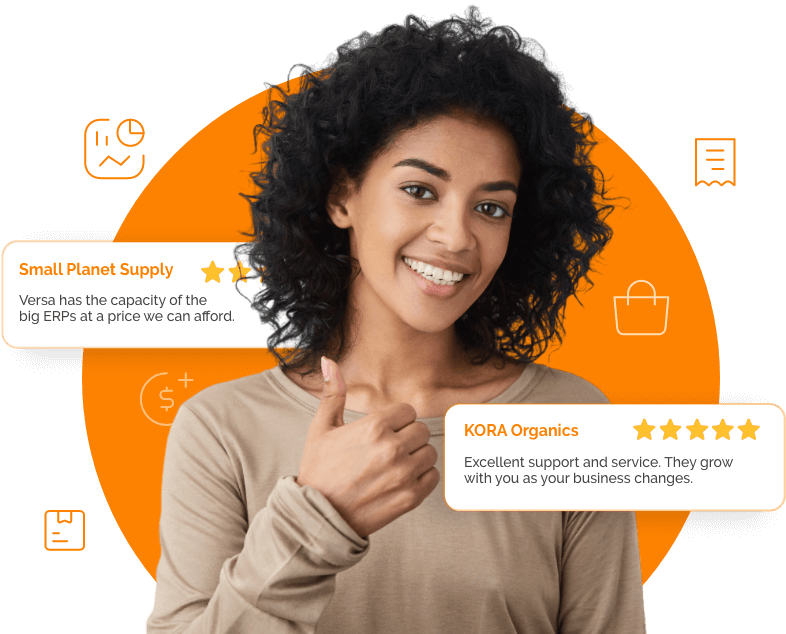As companies expand, their operations typically become more complicated. What might have been simple software tools (with some disconnect) become sprawling platforms and ecosystems of connected apps, integrations, and other tech that are often doing more harm than good. This blog post will take a closer look at this critical, strategic decision on whether to continue with a Best-of-Breed (BoB) technology stack or shift to an unified ERP Suite that can foster sustainable growth. We will delve into the pros and cons of each model, review some real use case examples, and offer a hands-on guide to help you decide which option will truly future-proof your business.
Industry Context: The significance of this conversation comes down to now
This is the operational reality. Digital transformation is not a buzzword anymore. Fast, agile, and visible operational reality is no longer an option. It is a necessity in order to survive. E-commerce has transformed customer expectations, supply chains are fluid and unpredictable, and you will be expected to fulfill orders faster, manage inventory tighter, and provide real-time status updates to customers and internal teams.
It is likely that the tools you use have either helped or hindered your business. Many organizations move to standalone tools because they are easy to implement, quick to learn, and affordable in the beginning. But as complexity grows, the risks escalate. Your technology stack can be what holds you back.
That’s why this topic is more important than ever. It’s not just an IT or technology decision – it’s a strategic business choice that shapes your ability to grow. That will impact your ability to scale without disruption, serve your customers’ requirements quickly, and maintain a competitive advantage in a brutal marketplace.
Understanding the Models: What Are We Really Comparing?
What Is a Best-of-Breed Stack?
Best-of-Breed (BoB) refers to choosing the best individual tool for each business function. For example, you could use QuickBooks for accounting, DEAR for inventory, ShipStation for logistics, and Shopify for sales. Each tool is the best at what it does. You get robust features for each function. And it can be liberating to select tools based on your particular needs.
But herein lies the challenge: all of these tools were not created to work with one another. You will end up using connectors, APIs, and middleware to just get basic workflows running. Your customer data is in one tool, your inventory is in another tool, and your finance is in yet another tool. This disconnected model will not be able to last long before it will start to show its seams.
What Is a Full ERP Suite?
A Full ERP Suite, on the other hand, is a single software platform that covers all your core business processes in one place. That includes accounting, inventory, purchasing, sales, shipping, reporting, and more.With a comprehensive ERP, all integrations are native, which means you don’t have to empty your pocket to build bridges between functions—they are integrated by design.
Modern ERP systems are not the bloated, enterprise-only (and expensive) systems of the past. Cloud-based ERPs such as Versa offer modular systems built for growing organizations. You do not buy upfront, you grow into it, and the main benefit is still the same; one system, one source of data, and one version of the truth.
The Five Pillars of Evaluation
Let’s explore five critical areas where the choice between BoB and ERP has a measurable impact.
1. Operational Visibility
BoB stacks tend to trap data within silos. Your marketing team pulls numbers from Shopify, your ops team from DEAR, and your finance team from QuickBooks. It creates a fragmented view of the business. The result? Delayed decision-making, duplicated data, and blind spots.
With a full ERP suite, data flows in real-time across all functions. Everyone—from warehouse to C-suite—has access to the same accurate data. Need to see inventory by warehouse? Margin by SKU? Sales trends across channels? It’s all there, and it’s up to date. This isn’t just about better reports. It’s about making better decisions faster.
2. Cost Over Lifecycle
BoB stacks might seem cheaper upfront. You pay small license fees per tool. But the hidden costs add up quickly: connector tools, integration developers, extra admin time, manual reporting labor, and most importantly—error costs.
ERPs often involve a higher upfront cost, but deliver greater efficiency over time. You eliminate redundancy, reduce tech support spend, and slash time wasted on data cleanups. Over a 3- to 5-year horizon, ERP platforms tend to be significantly more cost-effective, especially when you factor in the cost of inefficiency.
3. Data Integrity & Compliance
Data mismatches are common in BoB stacks. One platform says 10 units in stock; another says 8.Which one do you trust? These contradictions are not only annoying, they can also lead to compliance breaches, financial misstatements, and lost sales.
ERPs offer a common data structure. There is no confusion, no version error. Everything from SKUs to landed costs to vendor data is in one place. This is also a lot easier for audits, tax filings, and reporting to the board.
4. Scalability & Agility
When you’re small, adding another BoB tool feels easy.However, when you’re dealing with thousands of SKUs, multiple fulfillment centers, international customers, or multiple brands, that’s where things start to break down. Adding a new warehouse should not mean hiring a developer to make changes to your integrations.
An ERP suite was built to grow with you. For instance, if you’re launching in a new location, country or product line, the system was already built for these types of scaling adjustments. In short, it grows with you, not around you.
5. Vendor Accountability & Support
BoB stacks often lead to a frustrating support experience. When something breaks, everyone points fingers. The integration tool blames the app. The app blames the other app. You’re stuck in the middle.
With an ERP suite, there’s one point of contact. One team responsible for resolving issues. That means faster resolution times, better documentation, and far less stress for your internal team.
Use Case Profiles: Who Should Choose What?
Startup Under $1M Revenue
In the early stages, speed often trumps structure. You need to move fast, validate your product, and control costs. BoB tools make sense here. They’re affordable, lightweight, and easy to implement.
Scaling Brand $5M–$15M Revenue
This is where pain starts to set in. You’ve got multiple channels, warehouses, or suppliers. Your BoB stack is groaning under the weight. You’re spending more time managing systems than running your business. It’s the right time to start planning an ERP transition before things start breaking.
Mid-Market Distributor $20M+ Revenue
At this stage, visibility and control are everything. You can’t afford errors, downtime, or manual workarounds. You’re dealing with larger teams, complex workflows, and a need for audit readiness. A full ERP suite isn’t optional here. It’s a prerequisite for sustainable growth.
The Risk Curve: Recognizing the Tipping Point
There comes a point where your stack starts to hurt more than it helps. If you’re experiencing any of these, you’re likely approaching the tipping point:
- Your monthly close takes more than a week.
- Customer service can’t access real-time order status.
- You need a full-time role just to manage integrations.
- You’ve had to pause growth initiatives because “the systems aren’t ready.”
- You’re relying on spreadsheets as your main reporting tool.
These aren’t just operational hiccups. They are signs that your tech foundation is cracking. The longer you wait, the more disruptive the switch will be.
The ERP Suite Advantage: Built for the Long Game
This isn’t about replacing one tool with another. It’s about replacing fragmentation with cohesion. With an ERP, your team moves faster. Your leaders make decisions with confidence. Your customers get better experiences. And your business becomes scalable by design.
An ERP isn’t just software. It’s infrastructure. And like any good infrastructure, it provides stability, clarity, and the ability to go further with less friction.
Transitioning from BoB to ERP: How to Do It Without Chaos
Switching to ERP doesn’t have to be a painful transformation. Here’s how to manage it smartly:
- Audit Your Stack: Identify each system, what it does, who used it, areas of breakage.
- Map Your Critical Workflows: Focus on Order-to-Cash, Procure-to-Pay, and inventory management.
- Define Success: Faster close? Real-time margin visibility? Fewer support tickets?
- Evaluate ERP Solutions: Don’t just assess features. Look for a platform that matches your business model.
- Implement Phased Approaches: Start with finance or inventory and refine it. Then scale out.
- Train & Support the Team: Change is difficult. Communicate to your team early and often. Select vendors with proven onboarding supports.
Conclusion: You Don’t Need More Tools—You Need Less Chaos
There’s a point in every company’s journey where the tech stack that helped you grow becomes the thing holding you back. If you’re spending more time managing systems than serving customers, it’s time to reevaluate.
Best-of-Breed isn’t wrong. But it’s not built for scale. It’s a toolkit, not a foundation. And when you’re building for the future, you need a platform you can build on—not build around.
Future-proofing your business isn’t about doing more. It’s about doing better. About aligning your systems with your strategy. About creating clarity instead of complexity.
And that begins with choosing the right kind of system—before the one you have breaks.
Is your tech stack holding you back? Let’s talk about how a modern ERP suite can bring clarity, control, and scalability back to your business – all in one place.
Take the First Step Towards Transformation
Effectively manage your financials, multiple channel inventory, and production workflows with our award-winning ERP.
Let Versa Cloud ERP do the heavy lifting for you.
Do Business on the Move!
Make your businesses hassle-free and cut the heavyweights sign up for the Versa Cloud ERP today!!
Join our Versa Community and be Future-ready with us.









